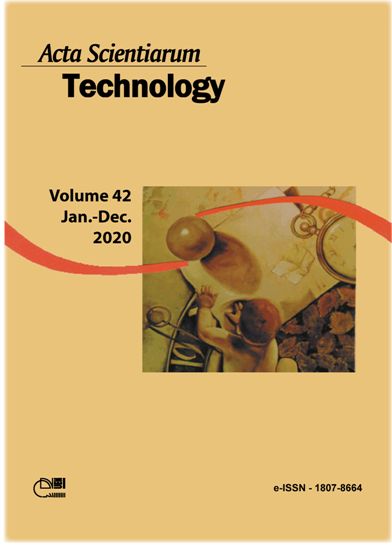Natural agents as auxiliaries in water clarification: literature review and experimental evaluation
DOI:
https://doi.org/10.4025/actascitechnol.v42i1.44800Palavras-chave:
Moringa oleifera; natural coagulants; natural flocculant; water treatment process.Resumo
The increasing demand for water resources (primarily for human consumption and industrial and agricultural activity) is driven by socio-economic development, and population growth. Recent research has been focusing on alternative coagulants based on natural elements, as opposed to the commonly used iron and aluminum salts, for use in water and wastewater treatment processes. In this context, a thorough literature review on alternative coagulants and their application to water treatment processes has been conducted in this work. In addition, three experiments have been conducted with a widely used natural organic coagulant (Moringa oleifera). The alternative clarification system used is the helically coiled tube flocculator (HCTF), with high turbidity removal efficiency and low processing times. A comparative analysis of the turbidity reduction over time was performed with samples collected after 600, 900, 1200, 1500, 1800, 2100, 2400, and 2700 s from the hydraulic circuit. The process efficiency using the proposed alternative coagulant reached 95.3% (after 1800 s). The turbidity removal efficiency remained almost constant after 1800 s, with variations below 1%. These results prove that natural alternative agents can be powerful tools in the water treatment process, with efficiency values exceeding those obtained using chemicals (e.g., aluminum sulphate) as coagulant/ flocculant agents.
Downloads
Downloads
Publicado
Como Citar
Edição
Seção
Licença
DECLARAÇíO DE ORIGINALIDADE E DIREITOS AUTORAIS
Declaro que o presente artigo é original, não tendo sido submetido í publicação em qualquer outro periódico nacional ou internacional, quer seja em parte ou em sua totalidade.
Os direitos autorais pertencem exclusivamente aos autores. Os direitos de licenciamento utilizados pelo periódico é a licença Creative Commons Attribution 4.0 (CC BY 4.0): são permitidos o compartilhamento (cópia e distribuição do material em qualqer meio ou formato) e adaptação (remix, transformação e criação de material a partir do conteúdo assim licenciado para quaisquer fins, inclusive comerciais.
Recomenda-se a leitura desse link para maiores informações sobre o tema: fornecimento de créditos e referências de forma correta, entre outros detalhes cruciais para uso adequado do material licenciado.















